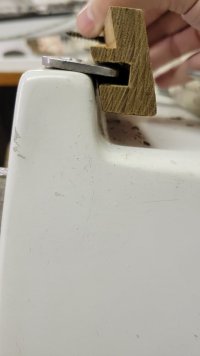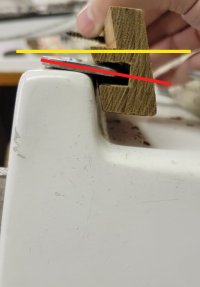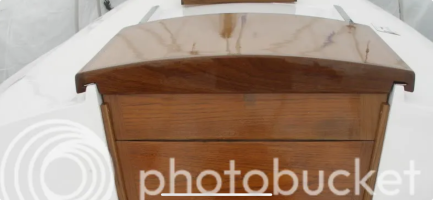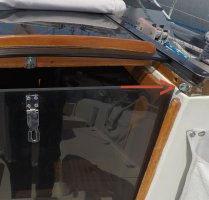klb67pgh
Member III
I am building a new companionway sliding hatch for my E25. It will be painted rather than all teak to give me some room for error on joinery, with perhaps a varnished teak pull on top. I made a mock side rail to confirm my measurements and angles and ability to use my table saw to cut the necessary grove in the side of the hatch frame for the sliding rail. I discovered the companionway opening is not symmetrical, which is not a complete surprise. However, I also discovered that the stainless (aluminum?) sliding rails are not installed parallel and are also not installed with the same lip - the port side rail edge sticks outboard quite a bit farther than the starboard side. Being mindful of Chesterton’s Fence, is there any reason why it would be intentionally installed not parallel and/or not the same by the factory or perhaps original owner after a refit (the boat was painted by the 1st or second owner at some point)? I see no evidence of the holes being redrilled in another location. It would be little effort to redrill the holes to make the port and starboard sliding rails uniform and parallel, and to fill the existing holes. That should make hatch construction easier. Does anyone else with an E25 or probably E27 have rails that are not installed uniform or parallel? Any thoughts on the matter? Is the unevenness just factory imprecision/error or on purpose? Does it make sense for the rails to taper aft to fore? I've attached a picture with a piece of what is left of one of the original teak hatch frame rails just for reference.





